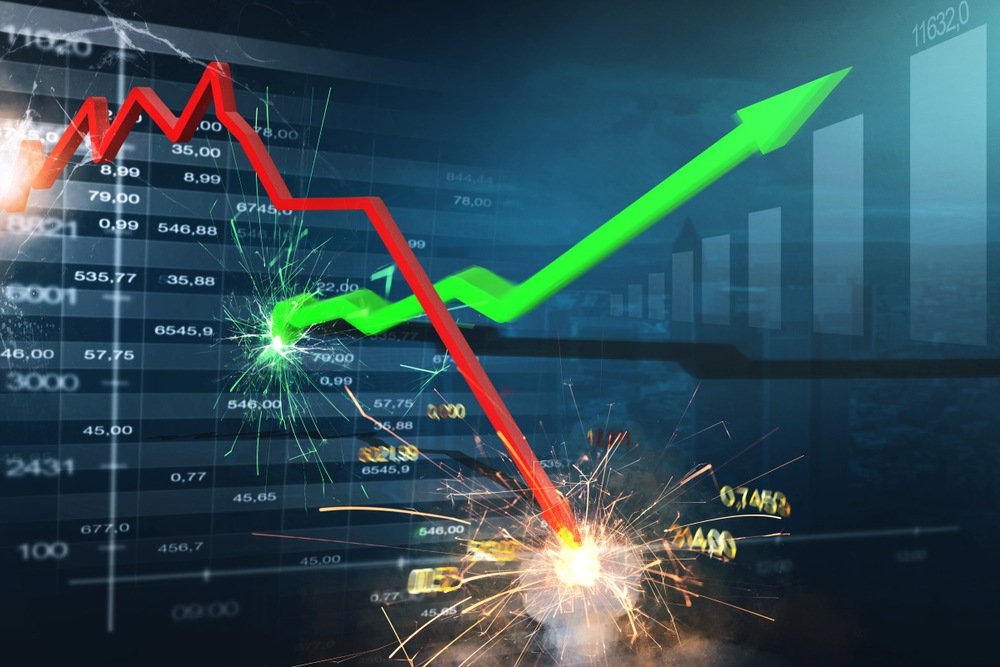Article Highlights:
- In the past year, the S&P 500 Index dropped 20%, then gained 20%.
- During that time, this indicator spotted three major declines and three buying opportunities.
- It’s an essential tool for when stocks are overvalued, like they are now.
At the end of 2018, I agreed with the Federal Reserve: Recession loomed in 2019.
That’s what the data said. That’s what the stock market action indicated.
Halfway through 2019, the situation looks different. The S&P 500 Index is up more than 20% since January 1.
But this year’s gain of 20% followed a loss of almost 20% in the fourth quarter of 2018.
That might not have been an official bear market for some analysts. Even without that designation, it was still a scary time. It was a time for caution.
One indicator caught that downturn. And it caught the recovery in 2019.
In the past year, this indicator spotted three major declines and three buying opportunities.
It will also spot the next downturn.
A Tool for Reacting to Changes in the Market
Looking ahead, it’s likely put options will be profitable before the end of the year. Put options increase in value when the prices of their correlating stocks fall.
More than 40% of stocks in the S&P 500 are in downtrends. Puts on those stocks will be profitable no matter what the S&P 500 does.
An indicator showing the number of stocks in uptrends is shown in the chart below. The number in downtrends is easy to find with this information. If more than 40% of stocks are in downtrends, then less than 60% must be in uptrends right now.
Percentage of Stocks in Uptrends

I calculate an indicator called moving average convergence/divergence (MACD) for each stock in the S&P 500. You can learn more about MACD by watching my video.
The chart shows the percentage of stocks in the index on an MACD buy signal. I call this MACD Breadth.
When most stocks are giving buy signals, I consider it to be a bull market. When most stocks are in downtrends, it’s a bear market.
Right now, a down market is inching closer.
Analysts Look in the Rearview Mirror
I know my definition of a bear market is different than others. That’s because I’m concerned about what the market is doing right now.
Many analysts define a bull or bear market by looking in the rearview mirror. They wait for stocks to drop 20%.
After that happens, they scream: “It’s a bear market.” By then, you already have large losses.
The chart above is sensitive to losses. It identifies major market declines, whether the S&P 500 drops 10% or 50%.
The definition of an MACD Breadth bear market is simple. When more than 50% of stocks are on sell signals, the average investor is most likely losing money.
This indicator says when the probability of losses is greater than the probability of gains, that’s a good time to reduce exposure to stocks.
So, here’s what you need to know about today’s market…
The Next Downturn Is Close
Based on fundamentals, stocks are overvalued.
The price-to-earnings (P/E) ratio is about 60% above its long-term average. A decline of about 40% would bring the P/E ratio back to average.
And the economic expansion is 10 years old. It’s the second longest on record. Eventually, all expansions end.
One economist, Gary Shilling, points to the Fed’s own data to show a recession is near.
The Fed’s model shows a 29.6229% probability of a recession in the next 12 months.
While the Fed’s level of precision to four decimal places is impressive, it’s not needed. The chart below shows a recession followed every reading of 30% — except one in 1967.
(Source: Federal Reserve)
Here’s What to Do
It’s possible the economy will escape a recession. However, the odds are against it.
Stocks typically decline about 35% in a recession. A plunge like that would bring the P/E ratio close to its long-term average.
In this market environment, with stocks significantly overvalued and a recession increasingly likely, investors should stick to their plan.
If your plan is to avoid large losses, reduce exposure when broad indicators such as MACD Breadth give sell signals. Then, invest aggressively when the indicator gives a buy signal.
I’ll be here to let you know when those signals happen.
Following the trend rather than forecasting the trend is the key to profits in 2019, and in every other year.
Regards,
Michael Carr, CMT, CFTe
Editor, Peak Velocity Trader
P.S. As the market action changed over the first months of 2019, my outlook evolved.
I trade options. So when my opinion changed, I switched from buying puts to buying calls.
If you aren’t familiar with options and are looking to learn more, Rachel and Ryan at TastyTrade.com explain the details in their calls and puts video.
If you’re interested in trading options, you might be wondering how to get started.
The first step is to open an account. One way to do that is through the tastyworks platform.
We do have a paid marketing relationship with them. But we’ve heard great feedback.
Of course, this is just one suggestion. Keep in mind that it’s not uncommon for people to use more than one broker to suit their needs. Always remember to do your due diligence.
Tastyworks Inc. (“tastyworks”) has entered into a Market Agreement with Banyan Hill Publishing (“Marketing Agent”) whereby tastyworks pays compensation to Marketing Agent to recommend tastyworks’ brokerage services. The existence of this Marketing Agreement should not be deemed as an endorsement or recommendation of Marketing Agent by tastyworks and/or any of its affiliated companies. Neither tastyworks nor any of its affiliated companies is responsible for the privacy practices of Marketing Agent, its website or this email. Tastyworks does not warrant the accuracy or content of the products or services offered by Marketing Agent, its website or this email.
